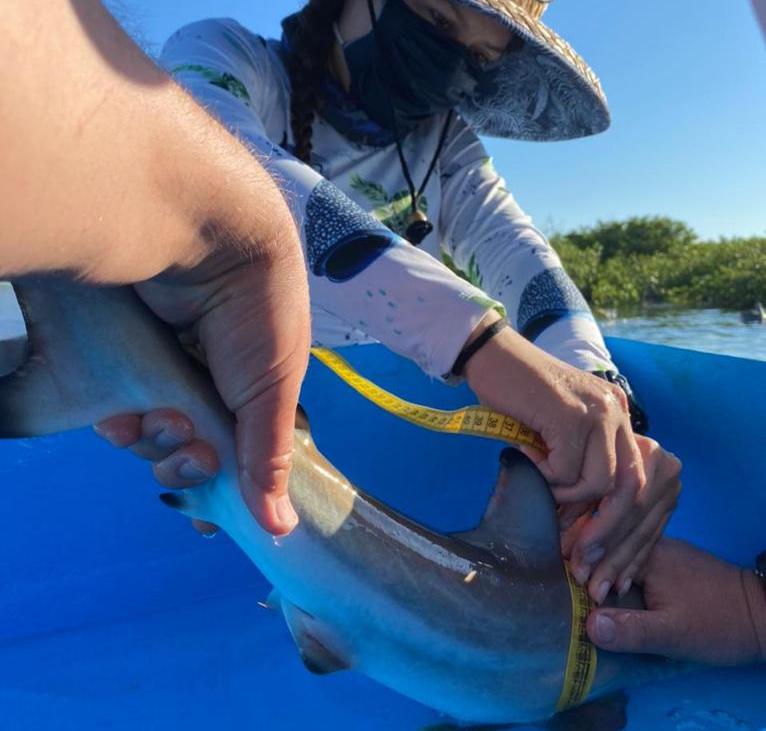Yasuní Chiriboga
Other projects
14 Jun 2016
Spatial Ecology and Conservation of Neonates and Juvenile Blacktip Reef Sharks (Carcharhinus limbatus) at San Cristobal Island, Galapagos Marine Reserve
This project aims to measure the impact of local artisanal fishing by-catch over the growth, health, and survivorship of neonate and juvenile blacktip sharks (C.limbatus) at Puerto Grande and La Seca mangrove bays. We will help inform the Galapagos National Park authorities for the development of a series of strategies that will help manage mangrove-fishing during the most sensible season for sharks.

The Shark Team working under COVID-19 bio-protocols at Puerto Grande.
The Galapagos Marine Reserve hosts one of the last remaining aggregations of sharks in the world, being the most touristic attraction of the islands. Despite this fact, little is known about their juvenile stage. Nursery grounds are key areas for the development of several species, as Carcharhinus limbatus.
These areas provide food sources and are critically important as shelter from predators. In the Galapagos, 75% of the coastline corresponds to exposed rocky shore, while the remaining 25% is represented by mangroves, which play this key role. Even though, sharks are protected within the Galapagos Marine Reserve, the current zoning scheme allows local artisanal fishermen to fish inside mangrove bays. According to previous studies, mangrove’s fishing capture is composed of 10-38% by species of great commercial value while juvenile blacktips’ by-catch represents 15-45%. Given this fact, it is a priority to evaluate how neonates and juveniles respond after a by-catch encounter.
Assessing health parameters and post-release behavior is key to ensure real values of short-term mortality from this specie. In order to accomplish this, we will carry out 5 days of fieldtrips at Puerto Grande and La Seca bay, on: February – begging of the pupping season, April – middle of the pupping season, and June – end of the pupping season. Four days will be used for a capture mark-recapture study, to understand how sharks are growing in bays where artisanal fishing is present. And one extra day will be used to simulate a by-catch encounter where we will be taking blood samples, registering reflexes and looking at post-release behavior, to determine if neonates are more prone to suffer any physical - physiological damage or die, than juveniles. Series of data produced on this study will show how by-catch could possible influence on neonate and juvenile C.limbatus growth and survivorship, as well as relate it to other shark species, as we recently discovered that Sphyrna lewini, endangered species and iconic from the Galapagos, shares Puerto Grande’s nursery ground. This information, as well as recommendations regarding temporal fishing-use of these areas, will be share with the Galapagos National Park Directorate for the development of management plans and strategies to reduce fishing during the most sensible and vulnerable season for sharks, which we predict it is from December until late March.